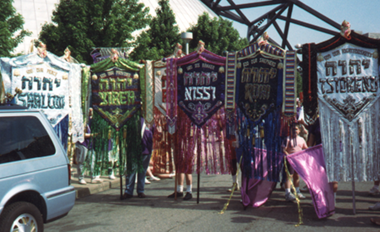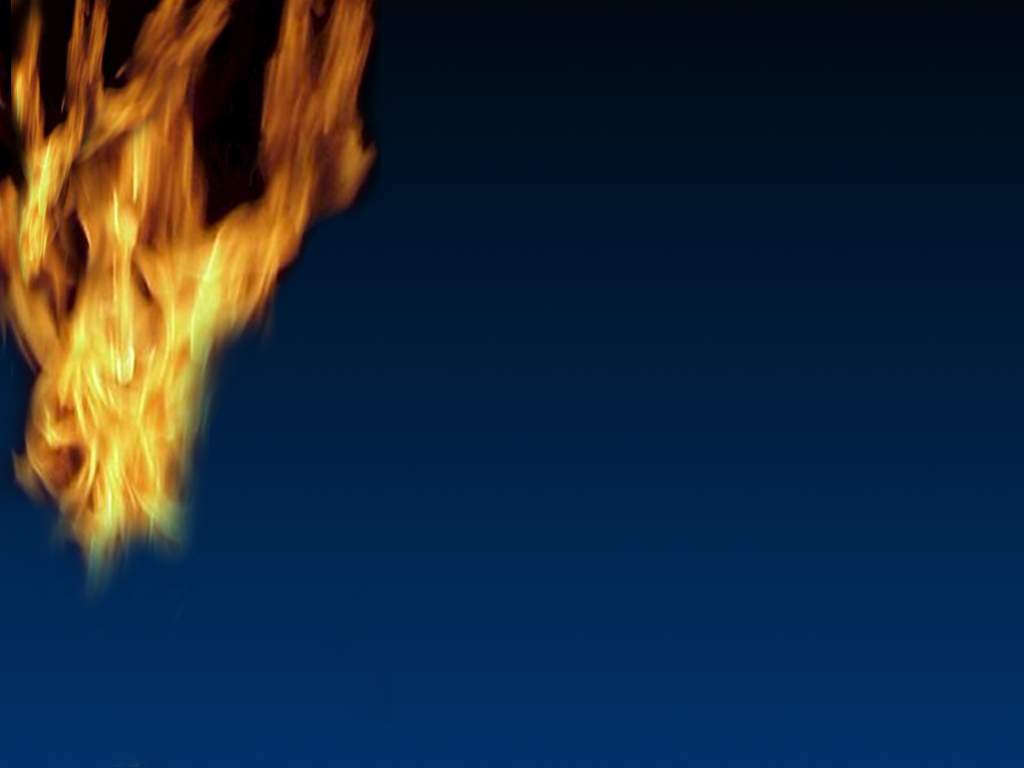The intention of the banners is to express, in color, design, and message, Who God is in light of the names by which He is called. As joint heirs with Israel (Ephesians 3:6), we reflect on the meaning of His covenants and promises so that we can, with greater understanding and appreciation of His nature, praise and glorify Him in new and deeper ways.
The canopied drape which borders each banner represents a place of meeting. Similar to the Tent of Meeting where Moses spoke with God in the desert (Ex. 33:7-11), the Tabernacle of Moses was also a "tent of meeting", a point of contact between God and His people. By God's design, He requires a place, a habitation, where that communication can take place. In fulfillment of the Covenant in Jesus and our belief in Him, we have now become that place ("For we are the temple of the living God..." II Cor. 6:16). The tent or "sukkak" formed by the canopy on each banner speaks of God's desire to have fellowship with us, and is an invitation to come into His presence and get to know Him better.
The flame atop each banner is a reminder of another meeting place. God proclaimed His Name to Moses in the burning bush at Mount Horeb, the mountain of God (Ex.3:14), and the Name He spoke was "I AM" (YHWH), literally meaning "the One who causes to exist". The flame, which did not consume the bush, represents the abiding presence and glory of God.
There are three tassels that hang at the center point of the banners, representing the triune nature of God. The center jewels of the tassels suggest the all-seeing eye of the Almighty and the omnipresence of God.
On each banner is a corner design that is worked with great detail to express the intricacy and complexity of the Lord. Some designs also carry part of the message of the banner.
On the back of each banner is inscribed a promise relating to the covenant Name appearing on the front. We gain understanding of the meaning of the covenant Name through God's own Word.
On the back is also a crown. This represents God's sovereignty and His absolute ability to fulfill His promises. It speaks of His omnipotence. The aurora above the crown reminds us of the rainbow, a sign given by God to remind Himself of the everlasting covenant He made with all life on the earth (Gen. 9:16,17). The teardrop beads are intended to suggest rain water, and therefore, favor. After the Noahic covenant was given, never again would water signify death but would now be an emblem of blessing and life. Rain is also a symbol of the power of God's word to accomplish His purposes (Is. 55:10 11).
The metallic streamers that hang below each banner also suggest rain and represent the blessing and favor of God which He freely pours upon His people (Proverbs 16:15).

March for Jesus, Pittsburgh, PA
Gallery photo taken at Night to Honor Israel, Dallas, TX]
Be the first to comment on these banners:






















